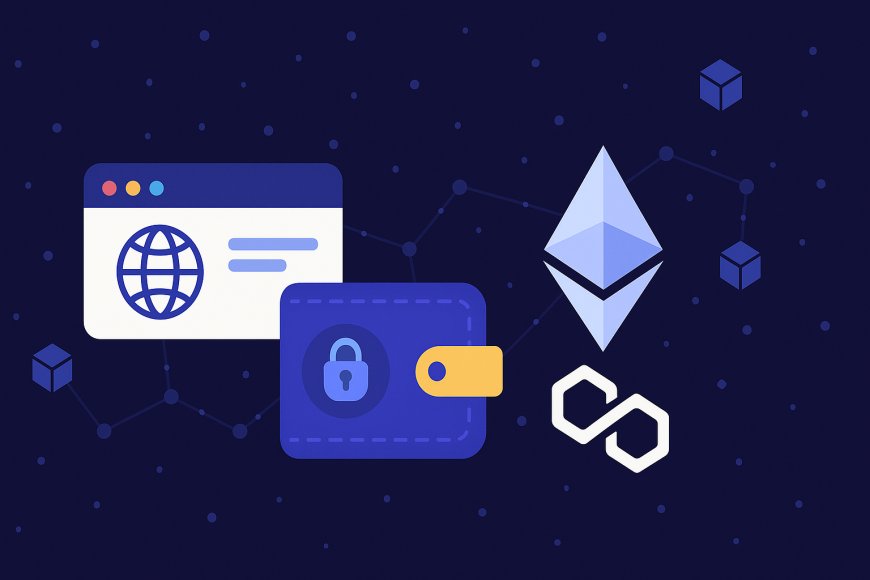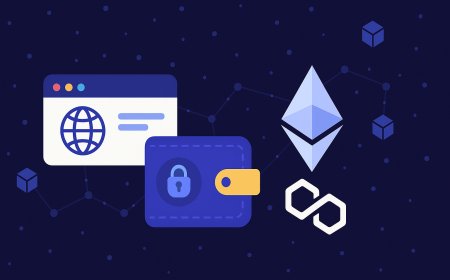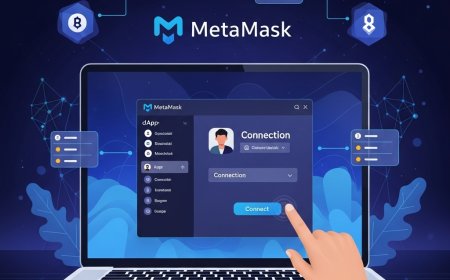What is Web3? A Beginner-Friendly Introduction

Web3 is one of the most talked-about terms in the tech world today. From cryptocurrencies and NFTs to decentralized finance and the metaverse, everyone seems to be talking about Web3. But what exactly is it? And why should you care?
If you’re confused by all the hype, don’t worry. This post breaks it down in simple terms so you can finally understand what Web3 is — and why it’s such a big deal.
What is Web3?
Web3 is the next evolution of the internet.
To understand it, let’s take a quick look at how the internet has changed over the years:
-
Web1 (The Static Web): This was the first version of the internet in the 1990s and early 2000s. You could only read content — think of simple websites with text and images, but no interactivity.
-
Web2 (The Social Web): This is the internet we’ve been using for the last 15+ years. You can read, write, share, and interact. Social media platforms, blogs, YouTube, and apps like Uber or Instagram all live here. But here's the catch: big tech companies control the platforms and own your data.
-
Web3 (The Decentralized Web): This is the new era — powered by blockchain. With Web3, you can not only read and write but also own your content, data, identity, and even money online. It removes the middlemen and puts power back in your hands.
How Does Web3 Work?
Web3 is built on blockchain technology — a decentralized system that records information in a way that’s transparent and almost impossible to change.
In Web3:
-
Instead of logging in with a username and password, you use crypto wallets like MetaMask.
-
Instead of trusting one company to hold your data, the data is stored on decentralized networks.
-
Instead of paying platforms like YouTube or Facebook to advertise your work, you can earn tokens directly from your audience.
This means no central authority — no banks, no tech giants, no third parties. Just users, creators, and communities interacting freely.
Examples of Web3 in Action
Here are a few real-life examples of how Web3 is already being used:
-
Cryptocurrencies (like Bitcoin and Ethereum) — digital money that isn’t controlled by any government or bank.
-
NFTs (Non-Fungible Tokens) — unique digital assets like art, music, or in-game items that you can truly own and sell.
-
DeFi (Decentralized Finance) — financial services like lending, saving, and trading that operate without traditional banks.
-
DAOs (Decentralized Autonomous Organizations) — internet-native communities where members vote and make decisions together using tokens.
-
The Metaverse — immersive digital worlds where you can work, play, or socialize — powered by blockchain and VR tech.
Why Web3 Matters
Web3 changes how we interact with the internet in powerful ways:
-
Ownership: You own your identity, your content, and even your money.
-
Privacy: You control your data. No more creepy ads following you online.
-
Access: Anyone with internet access can participate — even without a bank account.
-
Incentives: You can earn tokens and rewards for your contributions, not just the platform owners.
For people in Africa and other emerging markets, Web3 creates new opportunities for inclusion, innovation, and financial freedom.
The Challenges Ahead
Of course, Web3 isn’t perfect yet. It's still early, and there are issues like:
-
High transaction fees (on Ethereum)
-
Scams and poor user experiences
-
Regulatory uncertainty in many countries
-
A learning curve for new users
But just like Web2 took time to grow, Web3 is evolving — and fast.
How to Get Started with Web3
Want to dip your toes into Web3? Here’s a simple roadmap:
-
Set up a wallet like MetaMask or Trust Wallet
-
Buy a small amount of crypto (e.g., ETH or MATIC) on an exchange like Binance or Coinbase
-
Explore dApps (decentralized apps) like Uniswap, OpenSea, or Lens
-
Follow trusted Web3 creators and communities on Twitter, Discord, or Telegram
-
Read Daily4mative for easy guides and updates (😉)
Final Thoughts
Web3 is more than a buzzword — it’s a movement toward a freer, fairer internet. One where users are in control. Whether you’re an artist, developer, entrepreneur, or just curious, now is a great time to start learning.
Stick around. We’ll guide you every step of the way.
Enjoyed this post?
👉 Subscribe to our newsletter for more beginner-friendly Web3 guides.
👉 Follow us on Twitter @daily4mative for daily updates.
What's Your Reaction?
 Like
0
Like
0
 Dislike
0
Dislike
0
 Love
0
Love
0
 Funny
0
Funny
0
 Angry
0
Angry
0
 Sad
0
Sad
0
 Wow
0
Wow
0






















